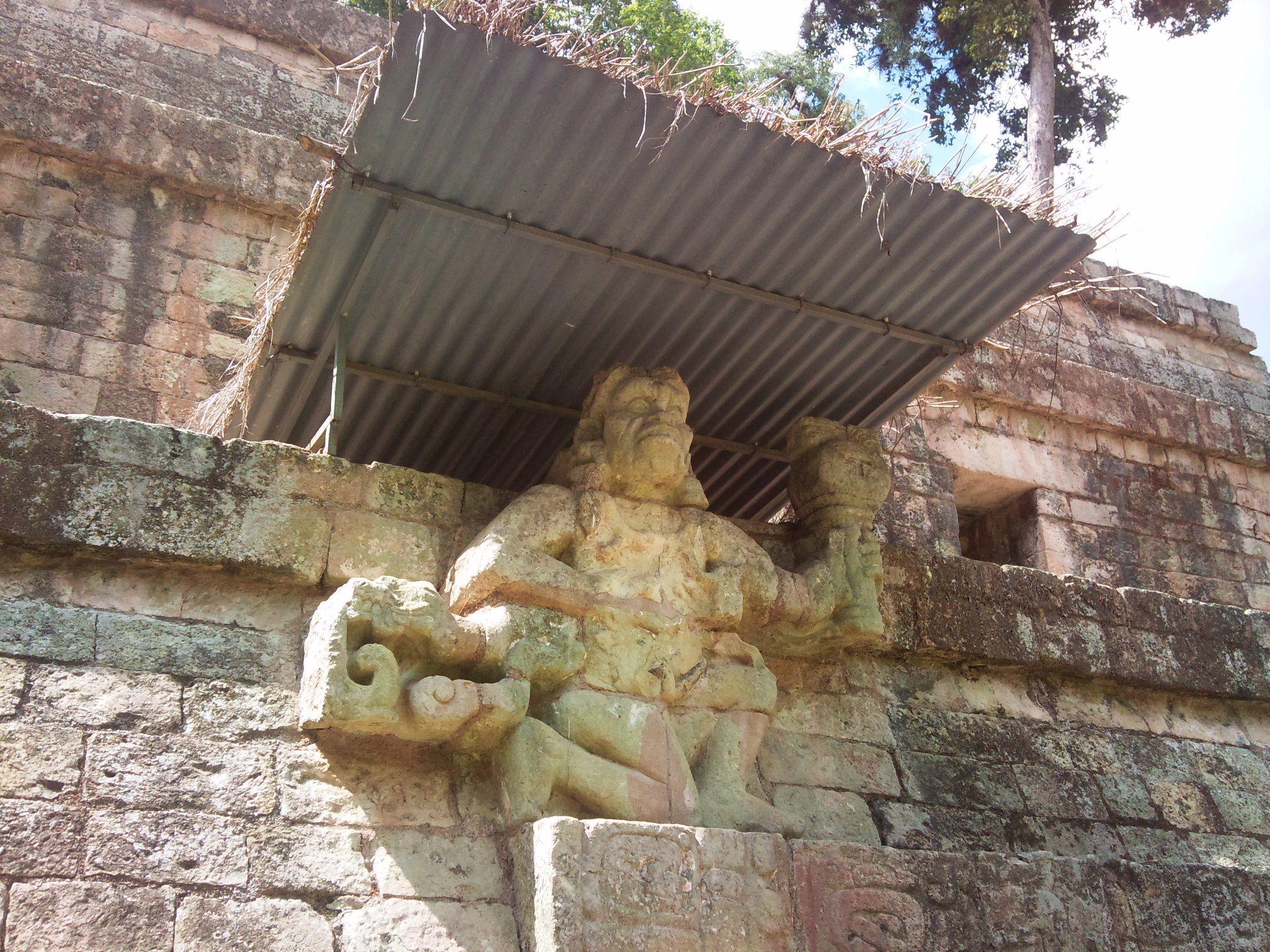Unveiling the Mysteries of Copan Ruinas: A Journey Through Maya History and Architecture
Introduction
Located in the lush valleys of western Honduras, near the Guatemalan border, lies one of the most important archaeological sites of the ancient Maya world, Copan Ruinas. Known for its artistic achievements, architectural splendor and cultural significance, Copán is a testament to the grandeur and complexity of Maya civilization. Often referred to as the “Athens of the Maya World,” the extensive ruins of Copán include towering pyramids, intricate carvings, and a unique hieroglyphic staircase that recounts the history of the city’s dynasties.
This article highlights the fascinating history, architecture, and significance of Copán Ruinas, exploring in depth what makes this site an important part of Maya heritage.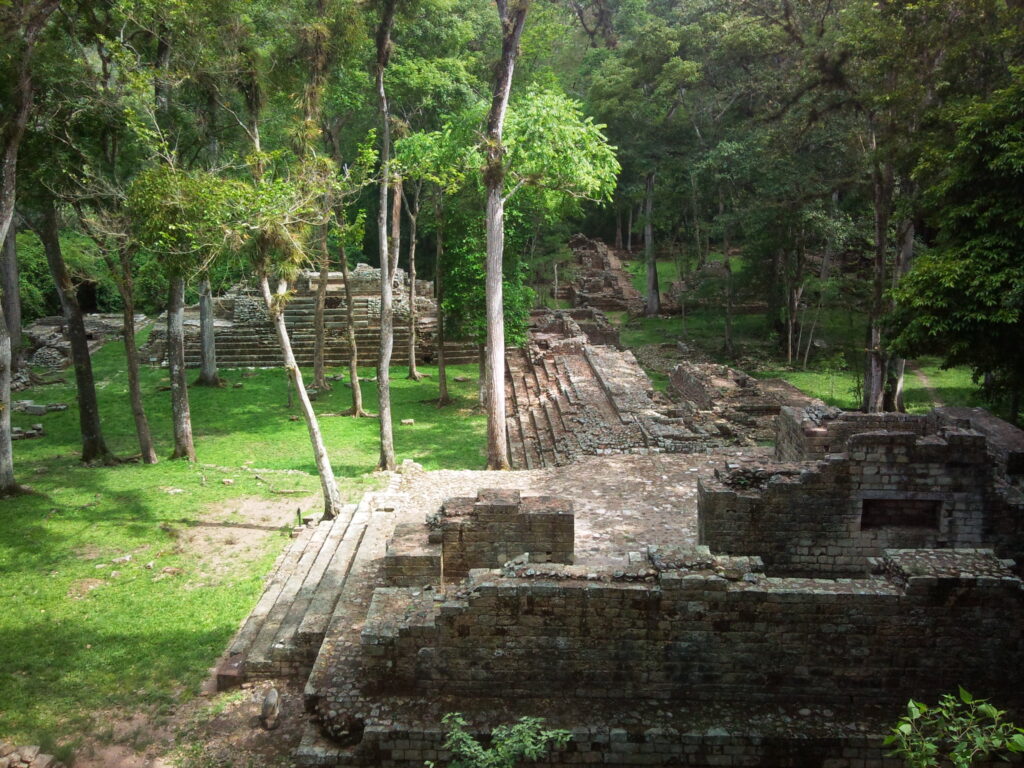
The Origins of Copán
Copán dates back to about 2000 BC, although it reached its peak as a powerful city-state in the Classic Maya period, between AD 400 and 800. Copán was part of the Maya lowlands, and like other great Maya cities, flourished due to its strategic location along important trade routes. Copán’s rulers are believed to have maintained close ties with Tikal and other powerful Maya city-states, though it eventually grew into regional dominance.
Copan’s power was not only political and military, but also cultural. The city became famous for its artistic production, especially in sculpture and stone carving, which were often used to glorify its kings and gods. Its ruling dynasty, founded by K’inich Yax K’uk’ Mo’ in AD 426, lasted for nearly 400 years. Each succeeding ruler has left behind monuments that not only celebrated his era but also preserved valuable historical information through detailed inscriptions.
The City Layout
One of the most striking aspects of Copán is its urban layout, which reflects sophisticated Maya planning. The city center is divided into two main parts: the Acropolis and the Great Plaza, each serving a distinct function in the social and ceremonial life of the city.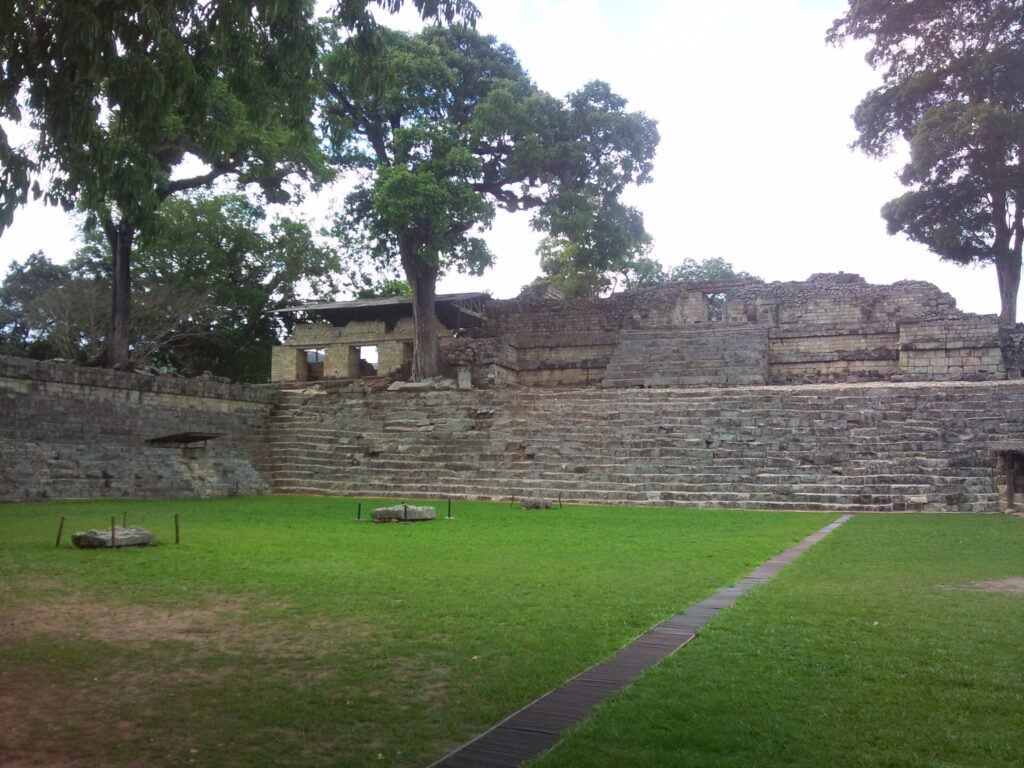
The Acropolis: Political and Ceremonial Center
The Acropolis, located on a raised platform, was the political center of the city, where the ruling elite lived and conducted the affairs of the state. It consists of two large courtyards surrounded by temples, palaces and other ceremonial structures. This part of the city offers a glimpse into the elite Mayan lifestyle, as it contains some of the most important artistic and architectural achievements of the Mayan civilization.
One of the most famous structures in the Acropolis is Temple 16, which stands at the center of the complex. The temple was built over the first tomb of the founder of the dynasty, K’inich Yax K’uk’ Mo’, thus linking the living rulers to their divine ancestors. The construction of the temple is a testament to the Maya’s deep respect for lineage and their belief in the divine nature of their kings.
The Great Plaza: A Stage for Public Spectacles
Adjacent to the Acropolis is the sprawling Great Plaza, an open space that served as a venue for public rituals, ceremonies, and gatherings. The plaza is dominated by a series of large boulders, which are excellent examples of Maya sculpture. These towering monuments, often built by kings to commemorate important events during their reigns, are covered in intricate carvings depicting rulers, gods and scenes from Maya mythology.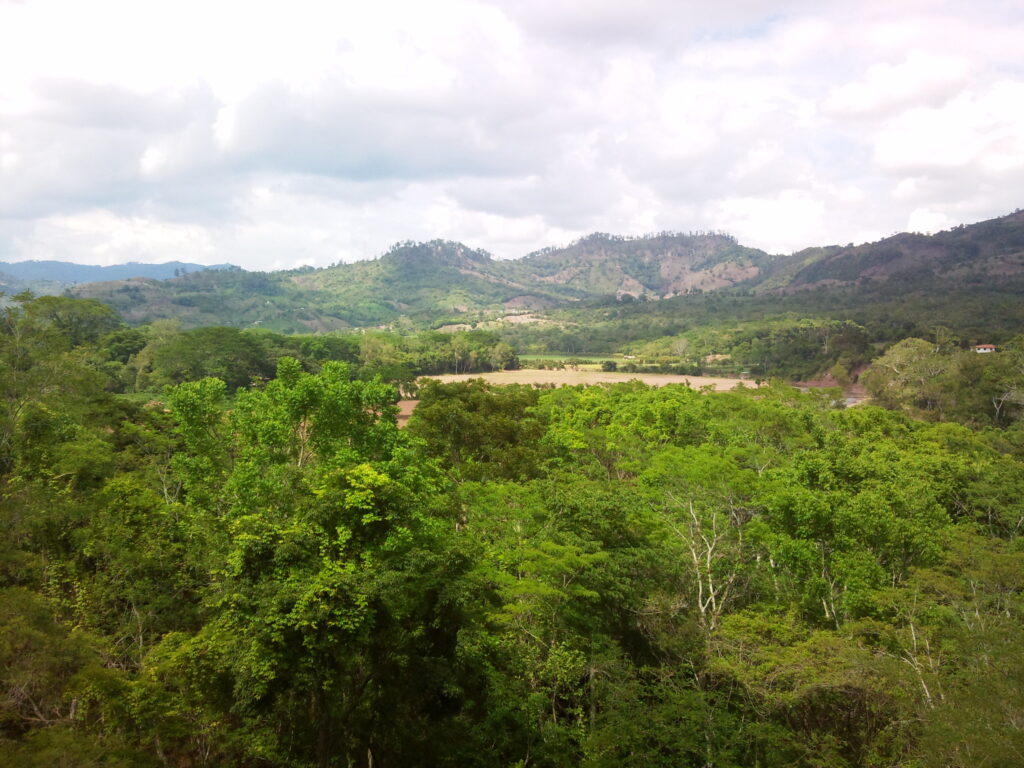
The Kopan stelae are particularly notable for their artistry, depicting many kings in elaborate regalia surrounded by symbolic images. These stelae were not only works of art but also political propaganda, designed to demonstrate the power and legitimacy of rulers.
The Hieroglyphic Stairway
One of Copán’s most prominent features is the Hieroglyphic Stairway, which climbs to one of the pyramids of the Acropolis. The Great Staircase consists of 63 steps, each decorated with hundreds of hieroglyphs, making it the longest Maya inscription. The hieroglyphs tell the story of Coppan’s rulers, documenting the city’s dynastic history spanning four centuries.
Built during the reign of King Smoke shell in the early 8th century, the Hieroglyphic Staircase is a historical record and a masterpiece of architectural art. The ladder not only symbolizes the ruler’s ascension to power, but also serves as a lasting tribute to the city’s achievements. Despite some damage over the centuries, the Hieroglyphic Stairway remains one of the most important sources of information about Maya history and culture.
Art and Architecture
Copán is often considered the artistic capital of the Maya world. Its sculptures, carvings, and monuments are among the finest examples of Maya artistry, exhibiting craftsmanship unmatched in Mesoamerica. The detailed work found in Copán’s monuments—whether lifelike portraits of rulers on stelae or intricately carved altars—highlight Maya mastery of stone as a medium.
In addition to its artistic achievements, Copan’s architecture is equally impressive. The city’s structures were built using limestone blocks, and many buildings were decorated with elaborate stucco reliefs and painted in bright colors, which have faded over time. The sheer size and complexity of the city’s architecture, from its towering pyramids to its intricate residential areas, reflects the city’s wealth and power during its heyday.
Daily Life in Copán
Although Copán’s monumental architecture and artistic achievements are astonishing, they were only made possible by a highly organized society with a complex social structure. The Maya of Copán lived in a hierarchical society, with the king and his court at the top, followed by nobles, scribes, artisans, and farmers.
The city’s economy was primarily based on agriculture, with corn as the main crop. The fertile river valleys around Copan allow the cultivation of not only corn, but also beans, squash, and other crops. The Maya also engaged in trade with other city-states in Mesoamerica, exchanging commodities such as jade, obsidian, and cacao.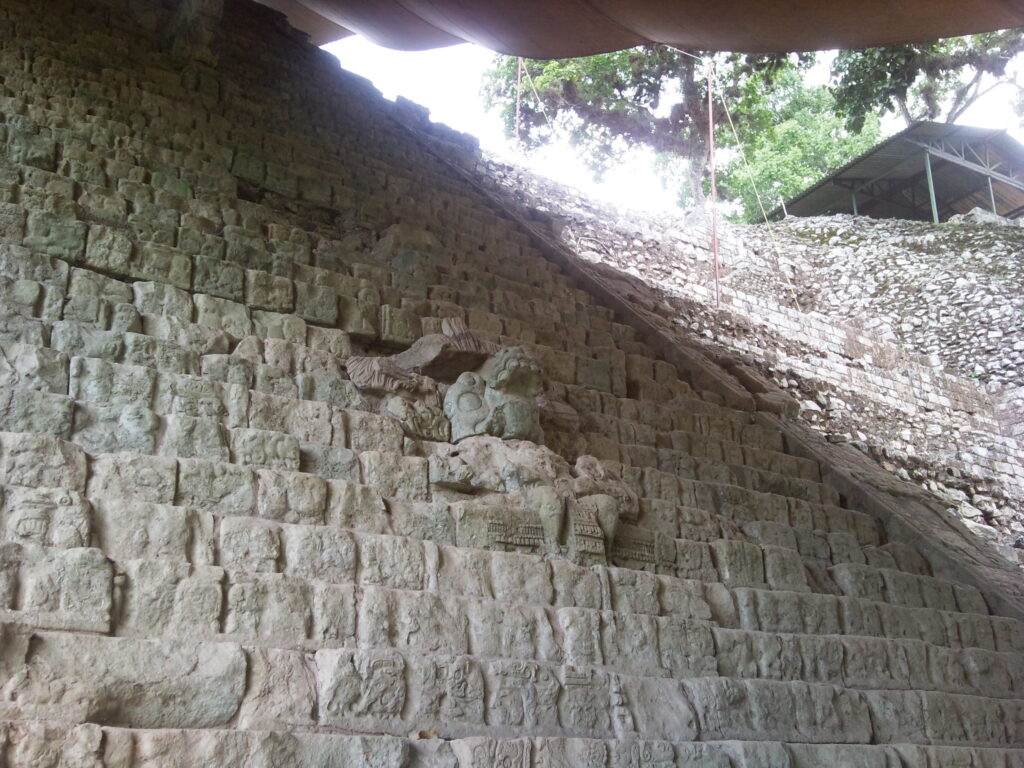
Religion played a central role in everyday life, and many of the city’s structures were built for ceremonial purposes. The Maya believed that their kings were divine mediators between gods and people, and much of Copán’s art and architecture reflects this religious worldview.
Decline and Abandonment
Despite its cultural and political achievements, Copán, like other Maya cities, eventually fell into decline. The reasons for this decline are still debated among archaeologists, but it is believed that environmental factors, political instability and overpopulation contributed to the city’s demise.
By the end of the 9th century, Kopan was largely abandoned, and the once great city was gradually reclaimed by the jungle. However, Copán’s legacy lives on in the form of its monuments and art, which continue to provide valuable insight into Maya civilization.
Rediscovery and Preservation
Kopan was rediscovered by European explorers in the 19th century, and since then, it has been the focus of extensive archaeological excavations. Today, the site is a UNESCO World Heritage Site, recognized for its cultural and historical significance. Ongoing conservation efforts have ensured that the ruins remain a valuable resource for understanding the Maya and their achievements.
Today visitors to Copán Ruinas can explore the remains of the ancient city, walk among its towering monuments, and marvel at the intricacy of its sculptures. The site also houses a museum, which houses many of the artifacts discovered during the excavations, providing further context for the city’s history.
Conclusion
Copán Ruinas stands as a testament to the ingenuity, creativity, and power of the Maya civilization. Its art, architecture, and inscriptions offer a window into the past, revealing a society that was sophisticated and deeply spiritual. Although the city fell into ruin centuries ago, its legacy lives on, captivating the imaginations of those who visit and study it.
As one of the most important archaeological sites in the Maya world, the Copan ruins continue to provide valuable insight into Maya history and culture, ensuring that their story is not forgotten. . Today, it remains a symbol of the enduring achievements of a civilization that shaped the history of Mesoamerica.
More Central America Travel Tips
Thanks for looking! I hope you enjoyed this travel guide for the Mayan ruins of Copan Ruinas The Heart of Maya Civilization
Don’t forget to check out my other travel blog posts for Central America and before you go!

